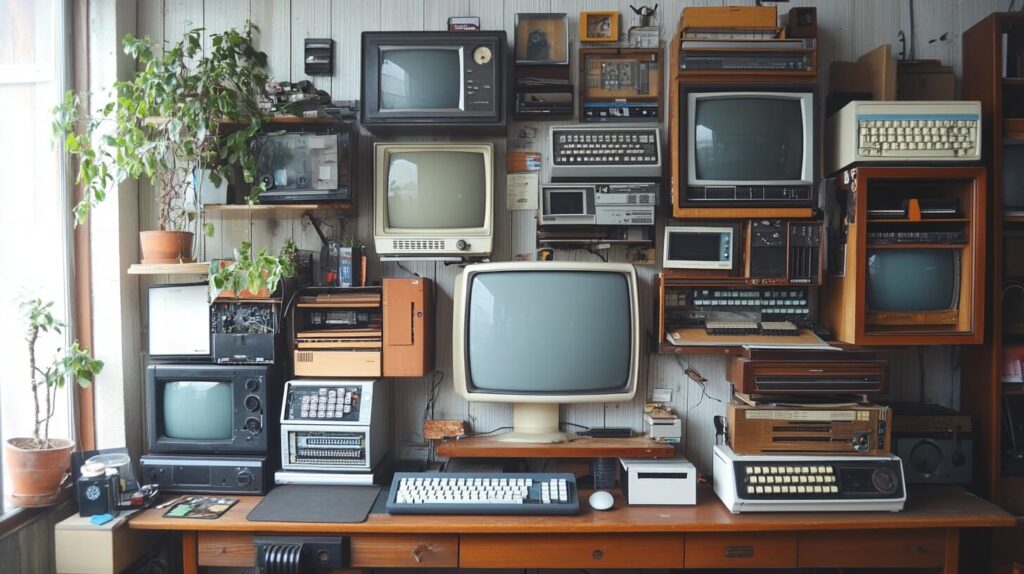Welcome to our comprehensive guide on the history of wireless communication! Whether you’re a tech enthusiast, a student, or just curious about how we’ve come to rely on wireless technology, this guide is here to answer your questions and provide an engaging overview of this fascinating topic.

Common Questions About History of Wireless Communication
Before diving into the History of Wireless Communication, let’s address some common questions and concerns people often have about wireless communication:
- What is wireless communication?
- How did wireless communication begin?
- Who were the key figures in its development?
- What were the major milestones in wireless technology?
- How has wireless communication impacted global society?
- What does the future hold for wireless technology?
What is Wireless Communication?
Wireless communication refers to the transfer of information between two or more points without using physical connections like wires or cables.
This can include everything from radio waves to infrared signals and is the backbone of modern technologies like Wi-Fi, cellular networks, and Bluetooth.
The Beginnings of Wireless Communication
The history of wireless communication dates back to the late 19th century.
Let’s take a journey through some of the key milestones:
Early Experiments and Discoveries
James Clerk Maxwell (1864)
James Clerk Maxwell, a Scottish physicist, predicted the existence of electromagnetic waves.
His groundbreaking work laid the theoretical foundation for wireless communication.
Maxwell’s equations described how electric and magnetic fields propagate through space, forming the basis for understanding radio waves.
Heinrich Hertz (1888)
Heinrich Hertz, a German physicist, was the first to demonstrate the existence of radio waves experimentally.
In 1888, Hertz successfully created and detected radio waves in his laboratory, proving Maxwell’s theory.
This achievement was crucial, as it provided the scientific community with concrete evidence of electromagnetic waves.
Guglielmo Marconi: The Pioneer
Marconi’s Early Work
Guglielmo Marconi, an Italian inventor, is often credited with being the father of wireless communication.
In the late 19th century, Marconi began experimenting with wireless telegraphy, building on the work of Maxwell and Hertz.
By 1895, he had sent the first wireless signal over a distance of one and a half miles.
Transatlantic Wireless Signal (1901)
In 1901, Marconi achieved a significant milestone by transmitting the first transatlantic wireless signal from England to Newfoundland.
This accomplishment demonstrated the potential of wireless communication for long-distance transmission, paving the way for future innovations.
Major Milestones in Wireless Technology
Wireless communication has evolved significantly since its inception.
Here are some of the major milestones that have shaped its development:
1920s: The Rise of Radio Broadcasting
The 1920s marked the beginning of commercial radio broadcasting.
This era saw the launch of the first radio stations, which revolutionized how people received news and entertainment.
Radio became a powerful medium for mass communication, connecting listeners across vast distances.
The Birth of Radio Networks
By the late 1920s, radio networks like NBC and CBS were established in the United States.
These networks enabled the simultaneous broadcast of programs to multiple stations, further expanding radio’s reach and influence.
1940s: The Development of Radar Technology
During World War II, radar technology was developed to detect enemy aircraft and ships. Radar, which stands for Radio Detection and Ranging, used radio waves to determine the distance, speed, and direction of objects.
The advancements made in radar technology during the war had a lasting impact on wireless communication, influencing the development of microwave communication and other applications.
1960s: The Advent of Communication Satellites
The 1960s witnessed the launch of the first communication satellites, such as Telstar and Early Bird.
These satellites significantly enhanced long-distance communication capabilities, enabling live television broadcasts and international phone calls.
Satellite communication became a vital component of global communication infrastructure.
The Impact of Satellites on Global Communication
Satellites allowed for real-time transmission of information across continents, bridging the gap between different parts of the world.
This technology played a crucial role in the globalization of media, commerce, and communication.
1980s: The Mobile Phone Revolution
The 1980s saw the introduction of the first cellular networks, leading to the mobile phone revolution.
Early mobile phones were bulky and expensive, but they laid the foundation for the widespread adoption of mobile communication.
The Evolution of Cellular Networks
- 1G Networks: The first generation of cellular networks (1G) provided analog voice communication. These networks were limited in capacity and coverage but marked the beginning of mobile telephony.
- 2G Networks: The second generation (2G) introduced digital voice communication, improving call quality and network capacity. 2G also enabled text messaging (SMS), a feature that became immensely popular.
1990s: The Birth of Wi-Fi
The 1990s brought the development of Wi-Fi, a wireless networking technology that allows devices to connect to the Internet without physical cables.
Wi-Fi quickly became a standard for home and office networking, providing users with the convenience of wireless Internet access.
The Expansion of Wireless Networking
As Wi-Fi technology advanced, it enabled the creation of public hotspots in cafes, airports, and other public spaces.
This expansion made Internet access more accessible and convenient for people on the go.
Impact on Global Society
Wireless communication has transformed nearly every aspect of our lives.
Here are some key areas impacted:
Communication
Wireless communication has revolutionized how we connect with each other.
Instant connectivity across the globe enables real-time communication and information sharing.
Mobile phones, social media, and messaging apps have become integral parts of our daily lives.
Personal Story: Staying Connected with Family
Think about the last time you video called a family member who lives far away.
The ability to see and talk to loved ones in real-time, regardless of distance, is a testament to the power of wireless communication.
Healthcare
Wireless technology has significantly impacted healthcare, enabling remote monitoring and telemedicine.
Patients can now receive medical consultations and monitor their health conditions from the comfort of their homes.
Real-World Example: Remote Patient Monitoring
For instance, patients with chronic conditions can use wireless devices to monitor their vital signs and send the data to their healthcare providers.
This allows for timely interventions and better management of health conditions.
Education
E-learning and online resources have made education more accessible.
Wireless communication allows students to attend virtual classes, access educational content, and collaborate with peers from anywhere in the world.
Personal Story: Online Learning During the Pandemic
During the COVID-19 pandemic, many students relied on wireless communication to continue their education.
Virtual classrooms and online assignments became the norm, highlighting the importance of wireless technology in maintaining educational continuity.
Business
Wireless communication has reshaped the global economy by enabling e-commerce and remote work.
Businesses can now reach customers worldwide and employees can work from virtually anywhere.
Real-World Example: Remote Work
Companies like Zoom and Slack have facilitated remote work by providing communication platforms that rely on wireless technology.
This shift has allowed businesses to maintain productivity and flexibility, even during times of disruption.
Personal Stories and Relatable Examples
Remember when you first used a mobile phone to call a friend across the country? Or the convenience of connecting your laptop to Wi-Fi at a coffee shop? These everyday experiences are rooted in the evolution of wireless communication.
It’s fascinating to think that not long ago, such connectivity was unimaginable.

The Future of Wireless Technology
As we look ahead, the future of wireless communication promises even more innovation:
5G Networks
The rollout of 5G networks is set to revolutionize wireless communication. 5G offers faster speeds and lower latency, enabling advancements in the Internet of Things (IoT), smart cities, and autonomous vehicles.
This next-generation network will support a massive number of connected devices and facilitate new applications that were previously not possible.
Real-World Example: Smart Cities
5G technology will enable the development of smart cities, where connected devices and sensors enhance urban living.
From traffic management to energy efficiency, smart cities will leverage wireless communication to improve the quality of life for residents.
Satellite Internet
Projects like SpaceX’s Starlink aim to provide global Internet coverage through satellite constellations.
This initiative seeks to bridge the digital divide by bringing Internet access to remote and underserved areas.
Satellite Internet has the potential to connect billions of people who currently lack reliable access.
Real-World Example: Bridging the Digital Divide
In rural and remote regions, traditional Internet infrastructure is often lacking.
Satellite Internet can provide these communities with high-speed connectivity, opening up opportunities for education, healthcare, and economic development.
Quantum Communication
Quantum communication is an emerging field that promises unhackable communication channels.
By leveraging the principles of quantum mechanics, quantum communication can provide enhanced security and privacy.
This technology has the potential to revolutionize secure communication, particularly for sensitive information.
Conclusion
The history of wireless communication is a testament to human ingenuity and the relentless pursuit of innovation.
From Maxwell’s theoretical predictions to the development of 5G networks, each milestone has brought us closer to a world where instant, wireless connectivity is the norm.
As we look to the future, the possibilities for wireless communication are boundless.
Whether it’s connecting remote communities, enabling smart cities, or providing unhackable communication channels, the impact of wireless technology will continue to shape our world in profound ways.
Thank you for joining us on this journey through the history of wireless communication. We hope you found this guide informative and engaging.
If you have any feedback or additional questions, please don’t hesitate to reach out.
Happy exploring!
Frequently Asked Questions
When did wireless communication begin?
The foundations of wireless communication can be traced back to the 1880s with the discovery of radio waves.
However, the first practical demonstration of wireless communication occurred in 1895 when Guglielmo Marconi transmitted the three-dot Morse code for the letter ‘S’ over a distance of three kilometers using electromagnetic waves.
What were some key milestones in the early development of wireless technology?
Several important milestones marked the early development of wireless technology:
- 1901: First wireless transatlantic message sent between Britain and Canada
- 1922: Discovery of FM frequencies and development of the portable radio
- 1970: Development of Ethernet and high-speed packet transmissions
- 1983: Introduction of the first mobile phone by Motorola and the 1G network
How did the development of wireless technology differ between the United States and Europe?
The development of wireless technology took different paths in the US and Europe:
- US focus: Data transmission and wireless local area networks (LANs)
- European focus: Voice communication and mobile telephony
These contrasting visions influenced the creation of Wi-Fi standards and the overall trajectory of wireless technology development.
What role did standardization play in the global proliferation of Wi-Fi?
Standardization played a crucial role in the global proliferation of Wi-Fi. The IEEE 802.11 standards, developed through a process of international collaboration and competition, helped ensure interoperability and widespread adoption of Wi-Fi technology.
This process involved tensions between US and European approaches, ultimately shaping the wireless networks we use today.
How has wireless communication evolved from its early days to modern systems?
Wireless communication has undergone significant evolution:
- 1895: Marconi’s first radio transmission using Morse code
- Early 1900s: Development of radiotelegraphy for long-distance communication
- 1970s: Introduction of ALOHAnet, laying groundwork for modern wireless networking
- 1980s-1990s: Emergence of cellular networks (1G, 2G, 3G)
- 2000s-present: Rapid advancement of mobile technologies (4G, 5G) and widespread adoption of Wi-Fi
This evolution has transformed wireless communication from a novelty to an essential part of global infrastructure, revolutionizing how we connect and interact across the world.


